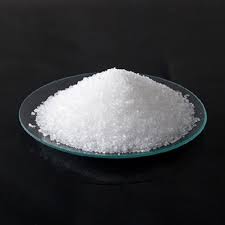Polyoxymethylene (POM) Market Growth, Share, Opportunities & Competitive Analysis, 2024 – 2032
Browse the full report at https://www.credenceresearch.com/report/polyoxymethylene-pom-market
Market Overview
The global POM market has been experiencing steady growth, driven by its increasing application in various end-use industries. In 2023, the market size was valued at approximately USD 3.6 billion, with projections suggesting a compound annual growth rate (CAGR) of around 6% from 2024 to 2030. This growth is primarily attributed to the rising demand for lightweight and durable materials in the automotive and electronics sectors.
Key Growth Drivers
1. Automotive Industry: The automotive industry is one of the largest consumers of POM. The demand for fuel-efficient vehicles has led to the increased use of lightweight materials. POM’s properties make it ideal for manufacturing components such as gears, bearings, and fuel system parts. The push towards electric vehicles (EVs) is further augmenting the demand for POM, as it is used in various electrical components due to its excellent electrical insulation properties.
2. Consumer Electronics: The rapid growth of the consumer electronics market is another significant driver for POM demand. The material’s stability and resistance to wear and tear make it suitable for manufacturing precision parts in electronic devices such as smartphones, laptops, and cameras. The trend towards miniaturization and the need for high-performance materials in electronics are boosting POM consumption.
3. Industrial Machinery: In industrial applications, POM is valued for its mechanical properties and resistance to chemicals. It is used in the production of various machine components that require high precision and durability. The ongoing industrial automation trend is increasing the demand for reliable and efficient materials like POM.
Challenges
Despite its advantageous properties, the POM market faces several challenges:
1. Environmental Concerns: The production of POM involves the use of formaldehyde, a hazardous substance. Environmental regulations regarding the emission of volatile organic compounds (VOCs) and the disposal of plastic waste are becoming stricter. This has prompted manufacturers to invest in research and development to create more sustainable and eco-friendly POM alternatives.
2. Fluctuating Raw Material Prices: The prices of raw materials used in the production of POM, such as methanol, are subject to market fluctuations. This can impact the overall cost of POM production and, consequently, its market price. Manufacturers are looking for ways to mitigate these risks through strategic sourcing and process optimization.
3. Competition from Other Plastics: POM faces competition from other engineering plastics such as polyamide (PA), polycarbonate (PC), and acrylonitrile butadiene styrene (ABS). These materials also offer excellent performance characteristics and are preferred in certain applications. Continuous innovation and differentiation are crucial for POM manufacturers to maintain their market position.
Future Prospects
The future of the POM market looks promising, with several factors contributing to its continued growth:
1. Technological Advancements: Ongoing research and development efforts are focused on enhancing the properties of POM and developing new grades with improved performance characteristics. Innovations such as bio-based POM and recycled POM are gaining traction as sustainable alternatives.
2. Expansion in Emerging Markets: The growing industrialization and urbanization in emerging economies present significant opportunities for POM manufacturers. The increasing demand for consumer goods, automotive, and industrial products in regions like Asia-Pacific and Latin America is expected to drive market growth.
3. Sustainability Initiatives: The global push towards sustainability is encouraging the adoption of eco-friendly materials and processes. POM manufacturers are investing in green technologies and sustainable practices to meet the evolving regulatory requirements and consumer preferences.
Key Player Analysis
- Celanese Corporation (US)
- Korea Engineering Plastics Co., Ltd. (South Korea)
- Daicel Corporation (Japan)
- BASF Group (Germany)
- Asahi Kasei Corporation (Japan)
- LG Chem (South Korea)
- SABIC (Saudi Arabia)
- Mitsubishi Gas Chemical Company, Inc. (Japan)
- LyondellBasell Industries Holdings B.V. (US)
- DuPont de Nemours Inc. (US)
- China BlueChemical Ltd. (China)
- KOLON ENP (South Korea)
- Henan Energy Group Co., Ltd. (China)
Segments:
Based on Type
- Homopolymer
- Copolymer
Based on End-use Industry
- Transportation
- Consumer
- Industrial
- Electrical & Electronics
- Other End-use Industries
Based on Grade
- Low Friction
- Low VOC
- Conductive
- Antistatic
- Other Grades
Based on Processing Technique
- Injection Molding
- Extrusion
- Compression Molding
- Other Processing Techniques
Based on the Geography
- North America
- The U.S.
- Canada
- Mexico
- Europe
- Germany
- France
- The U.K.
- Italy
- Spain
- Rest of Europe
- Asia Pacific
- China
- Japan
- India
- South Korea
- South-east Asia
- Rest of Asia Pacific
- Latin America
- Brazil
- Argentina
- Rest of Latin America
- Middle East & Africa
- GCC Countries
- South Africa
- Rest of the Middle East and Africa
Browse the full report at https://www.credenceresearch.com/report/polyoxymethylene-pom-market
About Us:
Credence Research is committed to employee well-being and productivity. Following the COVID-19 pandemic, we have implemented a permanent work-from-home policy for all employees.
Contact:
Credence Research
Please contact us at +91 6232 49 3207
Email: sales@credenceresearch.com
Website: www.credenceresearch.com



Comments
Post a Comment